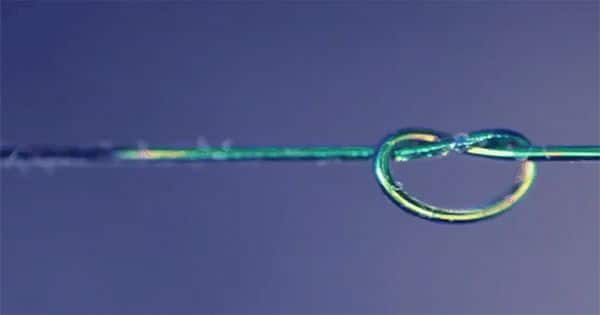The pressure under which the fibers are placed helps to fill in the gaps by changing the color. In the rise of humanity in global hegemony, the invention of the knot does not get the same habit as fire or chakra, but its importance should not be underestimated. Remarkably, even after so many years, our understanding of why some knots are so much stronger than others is astounding.
The lives of both sailors and mountaineers, often dependent on knot holders, spent centuries experimenting with different types of knots. E. Annie Proulx even got a Pulitzer-winning novel out of the wonderful variety of sea knots. Knotting is a central feature of topology, a complete field of mathematics, yet a broad theory predicts what kind of knot will hold and under what conditions humanity has been forgotten.
MIT PhD students have taken advantage of creating color-changing fibers to develop rules about giant pot bend knots, publishing his research in the journal Science. These are the knots where the two lines are forced together to act as long material pieces.
The answers come by analogy with the atomic spins of ferromagnetic matter as an example of how seemingly unrelated fields of science enrich each other. Using mathematical theory and a combination of colored fibers, Patil resolved an old power debate between the so-called zeppelin and alpine butterfly knots on the Eastside. He also demonstrated the qualities of the well-known reef knot and showed that half-knots tied in opposite directions are stronger than knots tied in the same direction.
More generally, knots are stronger if there are more crossings and changes in the direction of rotation between their strand segments. Co-author Dr. Jörn Dunkel said in a statement, “This model will allow you to see two knots that are almost identical, and be able to tell which is better.”
The Patil uses fibers made of different elastic indicators (which lighten slowly in a different light) by wrapping multiple transparent layers around one elastic core. When bent, stretched, or placed under a strain, the layers change thickness, changing the passage of light to produce colors that reflect their changes. Knots are not just a human phenomenon – like fire we have trained and adapted an existing force of nature.
In fact, knots are literally in our DNA, or perhaps it should be said that our DNA is sometimes tied together. We use these to make our clothes and tie them to surgery and they don’t always have to be stiff. Patil and colleagues give turbulent plasma, as we continue to try hard to dedicate ourselves to the energy of the sun in the form of nuclear fusion, resulting in examples of functional knots.














